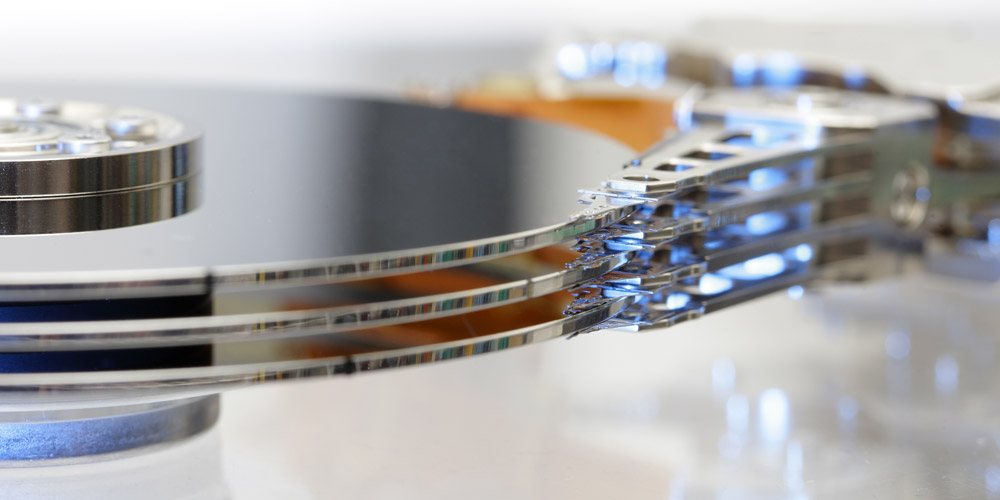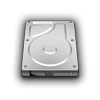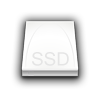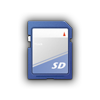Up to 30 years ago, the IBM PC was almost unbundling at the time, and the Hungarians in the then-COCOM list dropped out of record time. We reviewed the most important events of three decades of computing from XT to iPad.
The configurations made in the traditional sense, ie basic machines, monitors, and keyboards, mice, will soon disappear from our lives on vinyl records and typewriters. Mark Dean, who contributed to the development of the first IBM PC, just thirty years ago on August 12, 1981, said in a blog that his personal computer was no longer a motor of innovation, he used a tablet in his everyday life.
The first PC is 4000 times slower than today’s machines
In Hungary, desktop PCs dominate, the first PCI 5150-type IBM PC to be manufactured by florida engineers in the computer manufacturing industry with roughly one year of work – and whose direct predecessor was another 20-kgs science calculator with half a table.
Although the Personal Computer was previously used by other manufacturers, this model is the predecessor of current PCs, because its operating principle is the same as those used today. In this computer, only a 4.77 Mghz worked on a processor, and its memory was not more than a quarter megabytes in full extrusion but at the same time it was possible to convert its knowledge with expansion cards.
Intel estimates that today’s computer is about four times the size of the old and the power consumption of current processors is one-thousandth of an Intel 8088 chipset that is the heart of the star. Most of the copies were connected to a TV or monochrome (single-color display), used as a keyboard, and were already suitable for storing inventory or other corporate purposes. The mouse would not have been useful at this time, since the software using the graphics menus was missing from the first version of DOS repertoire. The mouse began to conquer the first Apple Macintosh, Lisa in 1984. The first IBM PC low-cost non-floppy disk drive, which was only a cartridge storage unit, was measured in gold at the beginning of the eighties: it was $ 1,000,000, which is equivalent to seven to eight hundred thousand forints at today’s prices, but could be even more serious. Nevertheless, this computer was already inexpensive, as a computer had occupied rooms for a decade or so, it cost millions of dollars, and the management required a dozen of engineers to work together. Compared to this, the command line system running Microsoft DOS software was already very user-friendly, after studying technical books, even private users interested in the subject could handle it.
Ugly, but the Hungarians immediately transcribe the PC
Despite the fact that the limitations of the Cold War COCOM list prohibiting the export of Western high-tech tools were still in place in the 1980s, only one year after the first IBM PC was introduced, Hungarian engineers were copied from the circuit diagrams, the computer being relatively simple to obtain from circuit elements – is a result of the former main constructor Gábor Faix at the Óbuda University. The necessary parts were purchased by the staff of the institute as private individuals and were sold to the parent through the Confederation Department, circumventing the prohibition of Western countries. Although ZX Spectrum and Commodore PCs were only a bit confused in the homes, the Computer Engineering Co-ordination Institute (SZKI), a subsidiary of Sci-L, started production of the first Hungarian PC, Proper-16, in 1982. According to Faix, there were some differences between the original IBM machine and the Hungarian clone: the latter was equipped with larger memory modules and the number of expansion card slots increased from four to eight, which was later confirmed by a US manufacturer in a model upgrade. Different connectors were used in the Hungarian computer, but this did not prove to be a good decision later because the insertion of hardware expansion modules were only possible with the addition of extra adapters.
The Hungarian PC clone, Proper 16 in Museum of Transport
In the DOStalgia exhibition currently in the Museum of Transport, until December 24. 2011, anyone can view the first IBM PC and the Hungarian clone, which is confident that the manufacturer has been criticized for the computer’s low-cost exports, but in the 1980s there was a more advanced technology available for the production of a machine house: for the Hungarian clones produced a significantly smaller number of machines than originally from IBM. From parts imported from the Far East, later, IBM, PC, Robotron and Videoton also produced IBM PC-compatible computers back to the early nineties.
There came the XT, the AT and 286
While the first average of IBM’s PCs in the 1980s probably did not hear, the PC XT and AT expressions may already be familiar to our readers older than thirty. XT was actually the successor to the first PC, behind the abbreviation “eXtended Technology”. Only the first sequences of the model released in 1983 were sold with a floppy drive, later hard disk was already included, although its storage capacity was only ten megabytes at that time, so nowadays it would be enough to store up to two mp3 music files or some photos. The PC ATs that came out around 1987 were already a next generation: in the common language, the models with the 80286 called processor called 286 were also introduced in Hungarian households with a few years of phasing. These PCs were already available in 8-MHz versions, larger hard drives were handled, and data transfer between hardware components was faster. The AT was already equipped with an internal battery, which could save the current time and date so that it was not required manually each time it was switched on.
An Intel-based AMD 286 chip that uses licensed technology
Type 286 used floppy drive, which could write and read 3 times more then the earlier version, it can store 1,2 Mbyte data magnetic disks as well (HD’s, so this means high data density). Later these will be changed to 1,44 Mbyte mini floppies with more robust design, first Apple spreads in computers: this format still lives together with CD’s, that disappear after 2000, when cheap pendrives are safer and can store more data.
The golden age is with the 486 and the Windows
Intel’s 80386 chipset, released in the mid-1980s, is now available in up to 40 megahertzs, faster than earlier models, and these machines appear in larger numbers in Hungarian homes and schools in the nineties. Surprisingly, this chip has been manufactured until 2007, since this chip operated in addition to computers in a number of other devices, such as ATMs or the once popular Nokia Communicator. Faster 486 chips that came later were available not only by Intel, but other manufacturers, such as the existing AMD and the already discontinued Cyrix, but the latter did not have a problem with compatibility problems. With 486 inserts, the sixty-six and one hundred-megabytes computing power is now available, so most of these configurations are not the low-cost DOS, but can be installed on Windows 3.1 and later on Windows 95 probably after the first computer mouse in their lives. Because of the simplicity of the latter program, it’s making it easy for ordinary people to work – it’s no coincidence that even the neighbors will write the premiere of the software, even though the ambition to purchase a legal version is still useless – at least in Hungary.
We have joined the internet with a Pentium machine
There is a strong performance jumper with the appearance of the Intel Pentium chipset: although its first types were only slightly faster than the 486s, they gradually reached the hundreds of megawatts of clock speeds. At the beginning of the internet’s penetration in the late 1990s, a three hundred MHz Pentium chipset and color, the configuration with a resolution of 800×600 pixels SVGA is already good. At the end of the nineties, the first individual graphics accelerators were released, which enabled the development of spectacular 3D games on home PCs. Though they are constantly being upgraded to date and goods are constantly declining, the models purchased are outdated year after year and are replaced with more power. Game consoles are already a serious competitor for PCs, they can simply be used, no need to upgrade, and the goods are also pretty good – for the benefit of selling high-end toys to manufacturers.
Old 486 and Pentium processors at the show
Most of us used the world wide web with Windows 98, but it was not very reliable and easily collapsed, so the average Internet was so honored until XP’s 2001 release. Windows XP was not perfect, so in 2004 it had to deliver a very complex patch pack to Microsoft, which significantly increased its security features, blocking the epidemic viruses at that time. This has been pretty good for the company, as this software is still used around the globe on most computers, Windows 7, which has been released years after the fall, has already worked well for its popularity.
The PDAs are dying out of a couple of years, and only a single subtype of portable Pocket PCs, the PNA, the navigation device, becomes popular and the rest is transformed into virtually smartphone by the end of the decade: in this segment, Microsoft says bankruptcy, but rival Apple and Google software are a big success.
Laptop, tablet and smartphone are new favorites
After the release of the Pentium processor, the game console (Sony Playstation) and the truly portable computer, the laptop in the 90s, the change in the last ten years has been mainly due to the increasing performance of existing technology. At the same time, handheld computers, primitive tablets, and the development of portable computing will accelerate – old skills emerge in a new form.
Playing, watching movies and surfing on the iPad
The appearance of netbooks does not revolve the industry, but a cheap, easy-to-carry model is being added to the manufacturers’ palette, but it will be crammed into the tablet-hit tablet iPad for a few years later. At present, smartphones are expected to be hit, which can almost be done by an average person: the opportunities offered by the new market can only be exploited by Apple and Google, and Microsoft is apparently troubled by the fact that it is still alive on the ground.
But the next ten years will not only boost performance, but more and more ingenious input and output devices, ergonomic operator surfaces. The star of the two or three years ahead will certainly be 3D rendering and cloud computing.
You can find this article in [origo] at: http://origo.hu/techbazis/20110812-harminc-ev-utan-lassan-bucsuzhatunk-a-pctol.html








